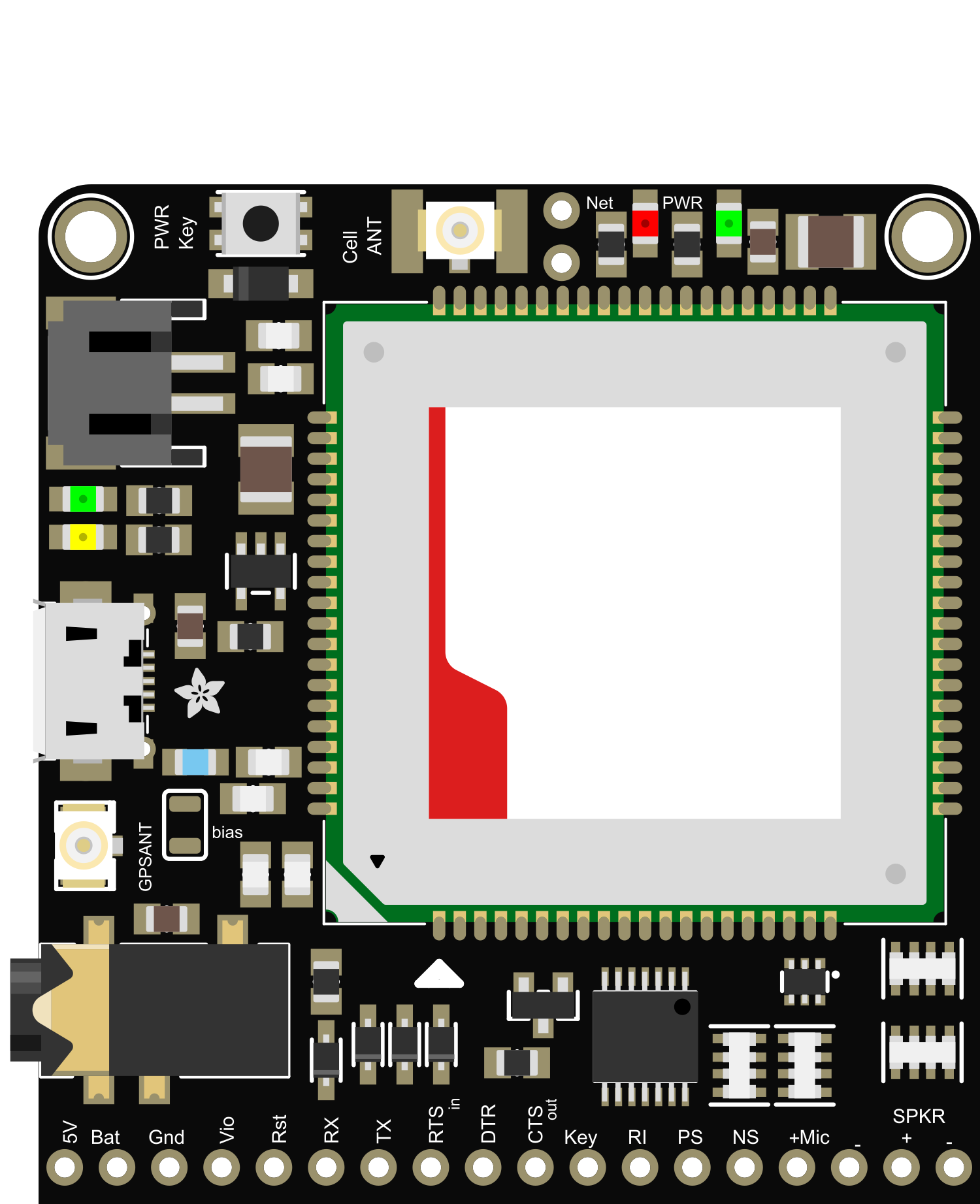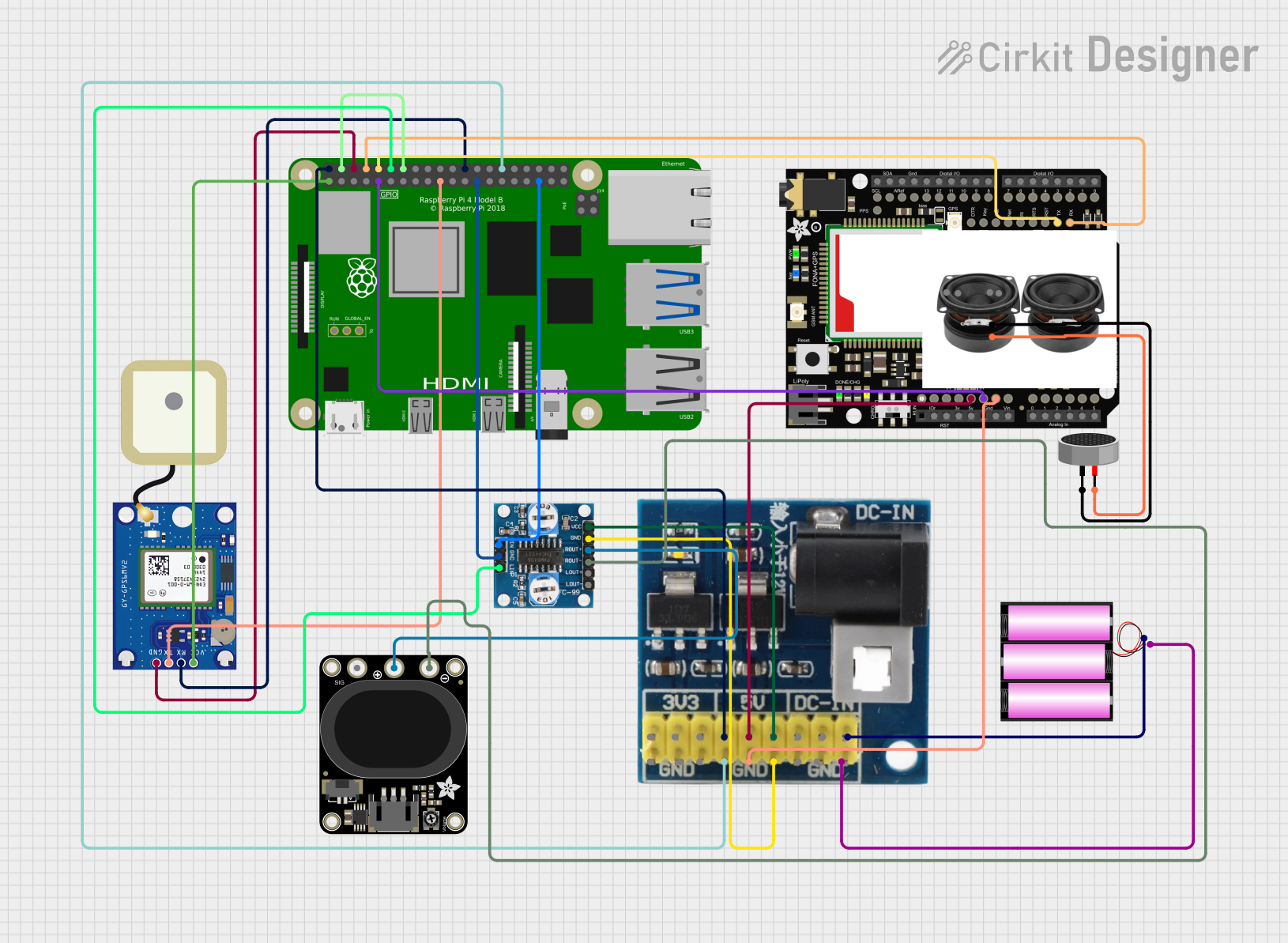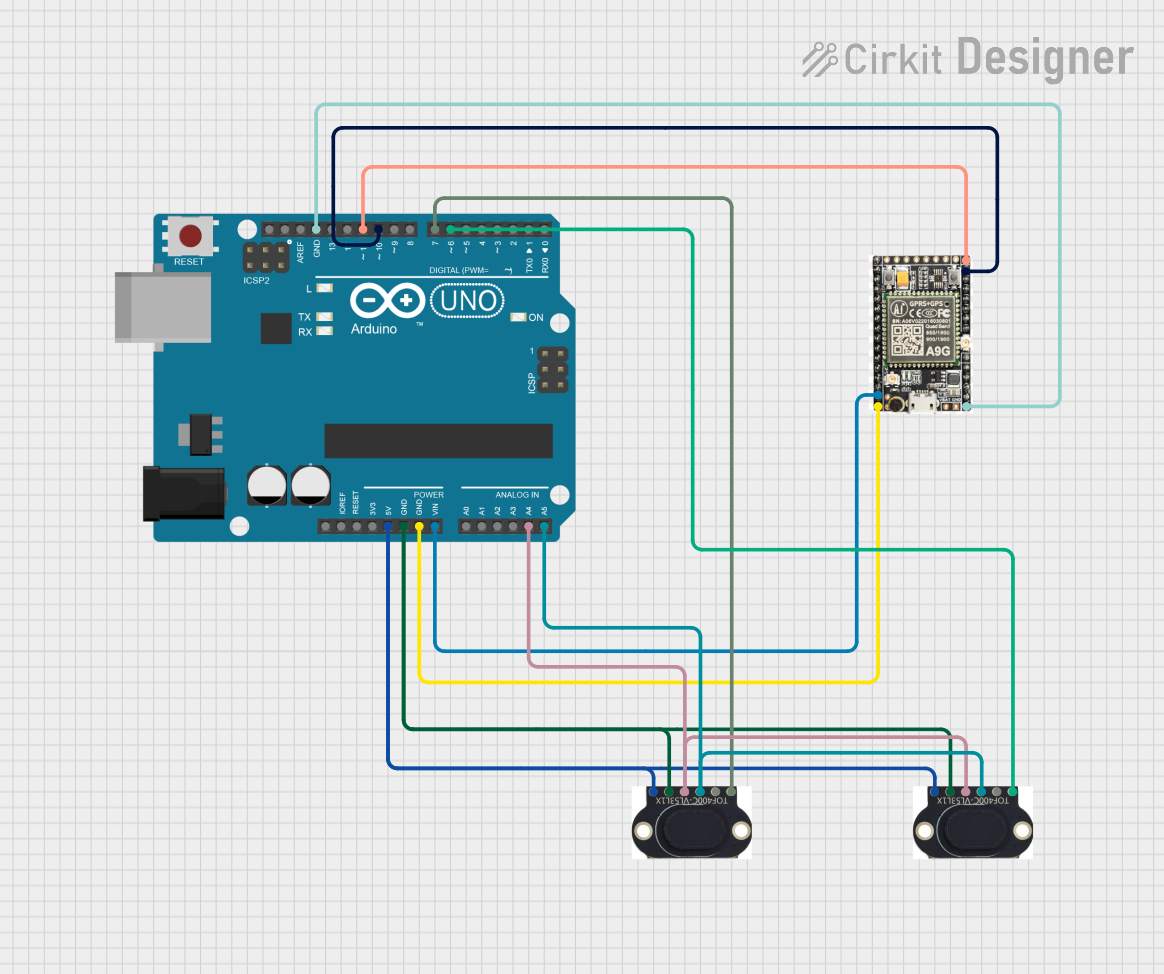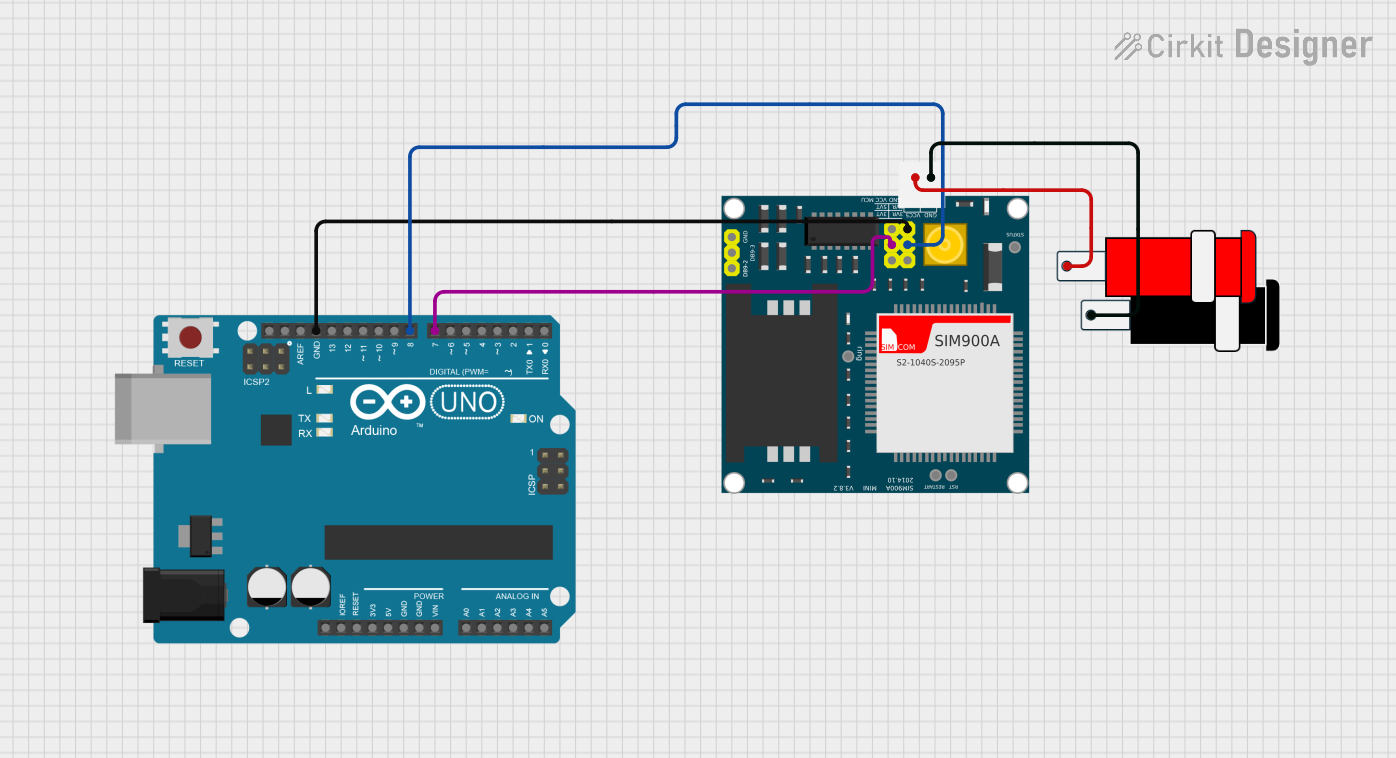
How to Use Adafruit FONA 3G Breakout: Examples, Pinouts, and Specs

 Design with Adafruit FONA 3G Breakout in Cirkit Designer
Design with Adafruit FONA 3G Breakout in Cirkit DesignerIntroduction
The Adafruit FONA 3G Breakout is a compact and reliable cellular module that enables microcontroller projects to access 3G data networks. It's perfect for IoT devices, remote monitoring, and mobile applications where communication over a cellular network is required. The breakout board is designed to work with a standard-sized SIM card and includes an SMA connector for an external antenna to ensure optimal signal reception.
Explore Projects Built with Adafruit FONA 3G Breakout

 Open Project in Cirkit Designer
Open Project in Cirkit Designer
 Open Project in Cirkit Designer
Open Project in Cirkit Designer
 Open Project in Cirkit Designer
Open Project in Cirkit Designer
 Open Project in Cirkit Designer
Open Project in Cirkit DesignerExplore Projects Built with Adafruit FONA 3G Breakout

 Open Project in Cirkit Designer
Open Project in Cirkit Designer
 Open Project in Cirkit Designer
Open Project in Cirkit Designer
 Open Project in Cirkit Designer
Open Project in Cirkit Designer
 Open Project in Cirkit Designer
Open Project in Cirkit DesignerCommon Applications and Use Cases
- Remote data logging and telemetry
- SMS-based remote control
- Location tracking with GPS functionality
- Voice calls from microcontroller projects
- Internet connectivity for IoT devices
Technical Specifications
Key Technical Details
- Networks: UMTS/HSDPA (3G) and GSM/GPRS/EDGE (2G)
- Frequency Bands: 850/900/1800/1900 MHz (2G) and 850/1900/2100 MHz (3G)
- Data Rates: 384 Kbps (3G), Class 12 (GPRS)
- Supply Voltage: 3.4-4.2V
- Operating Temperature: -40°C to +85°C
Pin Configuration and Descriptions
| Pin Number | Name | Description |
|---|---|---|
| 1 | Vio | Digital supply voltage (3.3V-5V) |
| 2 | GND | Ground connection |
| 3 | Key | Active low to turn on the module |
| 4 | RX | UART receive pin |
| 5 | TX | UART transmit pin |
| 6 | RST | Active low reset pin |
| ... | ... | ... |
Usage Instructions
How to Use the Component in a Circuit
- Power Supply: Connect the Vio pin to a 3.3V-5V power source, and connect the GND pin to the ground.
- SIM Card: Insert a standard-sized SIM card with data capabilities into the SIM card slot.
- Antenna: Attach a compatible 3G antenna to the SMA connector.
- UART Communication: Connect the RX and TX pins to the corresponding TX and RX pins of your microcontroller.
- Module Activation: Pull the Key pin low to turn on the module.
Important Considerations and Best Practices
- Ensure that the power supply can provide sufficient current for the module during peak operations.
- Use a level shifter if your microcontroller operates at a different logic level than the FONA 3G's 3.3V-5V range.
- Always power down the module before inserting or removing the SIM card to prevent damage.
- For optimal network reception, place the antenna in a location with minimal obstructions.
Troubleshooting and FAQs
Common Issues
- No Network Connection: Ensure the SIM card is activated and has a data plan. Check the antenna connections and placement.
- Module Does Not Power On: Verify the power supply and Key pin connections. Ensure the power supply is within the specified voltage range.
- Serial Communication Failure: Check the UART connections and ensure the baud rate matches the module's default setting.
Solutions and Tips for Troubleshooting
- If the module is unresponsive, perform a hard reset by pulling the RST pin low for a few seconds.
- Use the module's status LED indicators to diagnose power and network connectivity issues.
- Consult the Adafruit FONA 3G Breakout forums and community for additional support and resources.
FAQs
Q: Can I make voice calls with the FONA 3G? A: Yes, the FONA 3G supports voice calls. You will need to connect a speaker and microphone to the appropriate pins.
Q: What is the default baud rate for UART communication? A: The default baud rate is 115200 bps, but it can be adjusted using AT commands.
Q: How do I update the firmware on the FONA 3G? A: Firmware updates can be performed using the USB interface and the provided software tools from Adafruit.
Example Code for Arduino UNO
#include <SoftwareSerial.h>
// Pin definitions
const int FONA_RX = 2; // FONA TX
const int FONA_TX = 3; // FONA RX
const int FONA_RST = 4; // FONA RST
// Create a software serial object
SoftwareSerial fonaSerial(FONA_RX, FONA_TX);
void setup() {
pinMode(FONA_RST, OUTPUT);
digitalWrite(FONA_RST, HIGH); // Deactivate reset
fonaSerial.begin(115200); // Match the default baud rate of FONA 3G
Serial.begin(115200); // Start serial communication with the computer
Serial.println("FONA 3G test");
}
void loop() {
// Code to interact with the FONA 3G module
// For example, sending an SMS, making a call, or using data
}
Remember to keep the code comments concise and within the 80 character line length limit. This example demonstrates how to initialize the FONA 3G module with an Arduino UNO using a software serial connection. Additional functionality, such as sending SMS or making calls, can be implemented using the appropriate AT commands sent through the fonaSerial object.